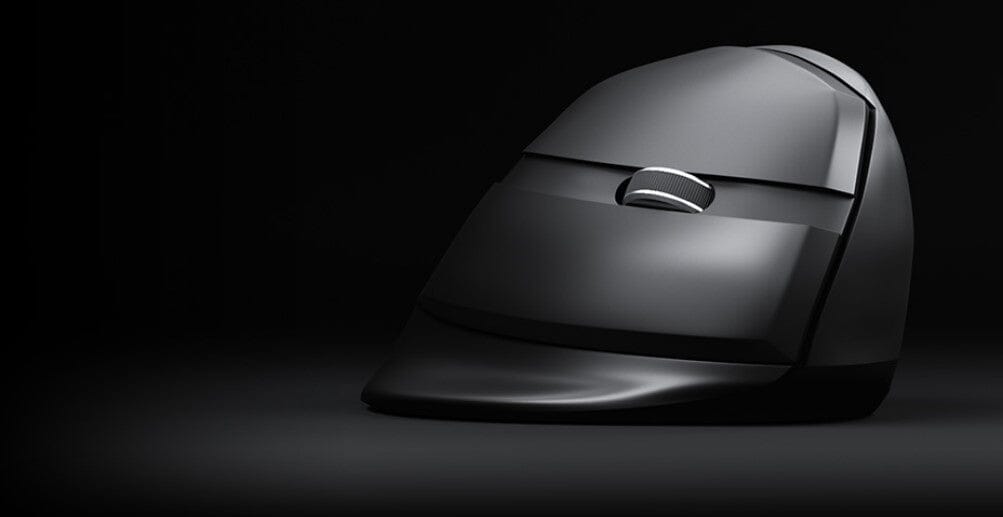
Ergonomic Mice: Bye-bye Wrist Pain
Share
If you are an avid computer user, you are probably familiar with the unpleasant sensations of wrist and hand strain that can arise from extended use of a regular mouse. If this is an issue for you, it might be time to consider an ergonomic mouse. Ergonomic mice are designed to be comfortable to use and reduce the risk of repetitive stress injuries such as carpal tunnel syndrome. In this blog post, we will look at the benefits of using an ergonomic mouse and how they can help you say goodbye to wrist and hand pain.
What Causes Wrist Pain from Using a Mouse
Using a regular mouse for extended periods can cause wrist pain due to several factors. The repetitive motion of moving the mouse and clicking can strain the muscles and tendons in the wrist and hand. Poor positioning of the mouse, such as using it at an uncomfortable angle or without proper support, can also contribute to wrist pain. Additionally, gripping the mouse too tightly or using excessive force can put unnecessary stress on the wrist. Understanding these causes is essential for finding a solution that can alleviate the discomfort and prevent further wrist pain.
Understanding Ergonomics and Its Benefits
Understanding ergonomics and its benefits is key to alleviating wrist pain and promoting overall comfort while using a computer mouse. Ergonomics is the science of designing and arranging objects in a way that maximizes efficiency and reduces strain on the body. When it comes to ergonomic mice, the design and placement of buttons, the shape of the mouse, and the materials used all contribute to a more comfortable user experience. By using an ergonomic mouse, you can reduce the risk of repetitive stress injuries and enjoy a more productive and pain-free computing experience.
Types of Ergonomic Mice
When it comes to ergonomic mice, there are several different types available to suit your individual needs. One popular option is the vertical mouse, which allows your hand to rest in a more natural handshake position, reducing strain on the wrist. Trackball mice are another choice, where you control the cursor by moving a small trackball with your fingers or thumb. Some ergonomic mice even come with customizable buttons and scroll wheels for added convenience. It's important to explore these different types and find the one that provides the most comfort and support for your wrist and hand.
Choosing the Right Ergonomic Mouse
When it comes to choosing the right ergonomic mouse, it's essential to consider your specific needs and preferences. Take into account factors such as hand size, grip style, and any additional features you may require. Do you prefer a vertical mouse or a trackball mouse? Are customizable buttons and scroll wheels important to you? Consider trying out different options to see what feels most comfortable and supportive for your wrist and hand. Remember, finding the right ergonomic mouse can make a significant difference in preventing wrist pain and enhancing your overall computing experience.
How to Adjust Your Workstation for Optimal Comfort
To ensure optimal comfort while using an ergonomic mouse, it's important to make adjustments to your workstation. Start by positioning your mouse and keyboard at a height that allows your arms to rest comfortably at a 90-degree angle. Use a chair with proper back support and consider adding a cushion or lumbar roll if needed. Take breaks frequently to stretch your hands and wrists, and consider using a wrist rest to support your wrists while typing or using the mouse. By making these adjustments, you can create a workstation that promotes comfort and reduces the risk of wrist pain.
Additional Tips for Preventing Wrist Pain
If you want to prevent wrist pain while using an ergonomic mouse, here are some additional tips for you. First, take regular breaks and stretch your hands and wrists to avoid overuse. Second, practice good posture and maintain a neutral wrist position while using the mouse. Third, consider incorporating exercises and stretches specifically designed to strengthen the muscles in your hands and wrists. Finally, invest in a supportive mouse pad or wrist rest to provide additional comfort and support. By following these tips, you can further protect your wrists and enjoy a pain-free computing experience.
Check out our comprehensive range or Ergonomic Mice HERE
